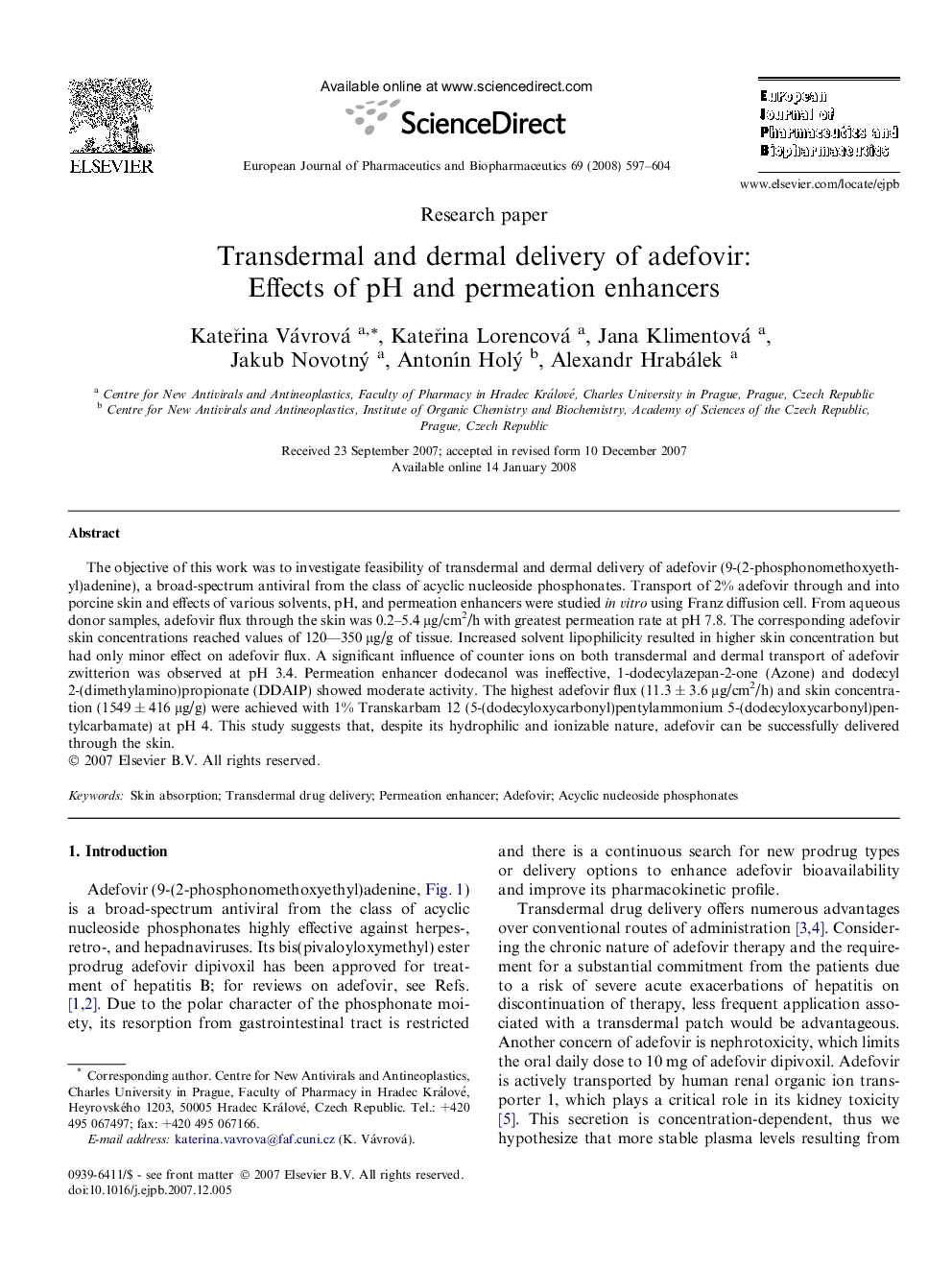| Article ID | Journal | Published Year | Pages | File Type |
|---|---|---|---|---|
| 2084665 | European Journal of Pharmaceutics and Biopharmaceutics | 2008 | 8 Pages |
The objective of this work was to investigate feasibility of transdermal and dermal delivery of adefovir (9-(2-phosphonomethoxyethyl)adenine), a broad-spectrum antiviral from the class of acyclic nucleoside phosphonates. Transport of 2% adefovir through and into porcine skin and effects of various solvents, pH, and permeation enhancers were studied in vitro using Franz diffusion cell. From aqueous donor samples, adefovir flux through the skin was 0.2–5.4 μg/cm2/h with greatest permeation rate at pH 7.8. The corresponding adefovir skin concentrations reached values of 120—350 μg/g of tissue. Increased solvent lipophilicity resulted in higher skin concentration but had only minor effect on adefovir flux. A significant influence of counter ions on both transdermal and dermal transport of adefovir zwitterion was observed at pH 3.4. Permeation enhancer dodecanol was ineffective, 1-dodecylazepan-2-one (Azone) and dodecyl 2-(dimethylamino)propionate (DDAIP) showed moderate activity. The highest adefovir flux (11.3 ± 3.6 μg/cm2/h) and skin concentration (1549 ± 416 μg/g) were achieved with 1% Transkarbam 12 (5-(dodecyloxycarbonyl)pentylammonium 5-(dodecyloxycarbonyl)pentylcarbamate) at pH 4. This study suggests that, despite its hydrophilic and ionizable nature, adefovir can be successfully delivered through the skin.
